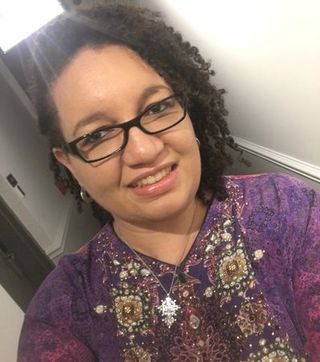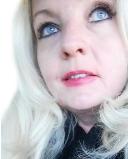Synesthesia
A Sense of Machines
Therapist Heidi Hollis' mirror touch synesthesia extends to technology.
Posted December 30, 2019

Most of us can relate on some level to the personification of machines: we name our cars, for example. But for a subset of extremely sensitive and empathic people known as mirror-touch synesthetes, their complete empathy appears to extend to the inanimate.
For the past several years, I've been documenting these extraordinary cases as they come up. I coined the terms "machine empathy" and "machine empaths." At this point, I have found five in all. Along the way, a neuroscientist, a biophysical anthropologist, and a trans-humanist presidential candidate opined on these people. A summary of their stories can be found here.
It is interesting to me that they are all women, and until the following interview, all millennial women. Heidi Hollis, an author, illustrator, and occupational therapist for the Veteran's Administration in California, doesn’t want to reveal her age, but she is somewhat older than my previous profiles. Perhaps young women feel more comfortable expressing such inner and unusual impressions or perhaps it is tied to gender and generation somehow; it needs more research. One young man in India wrote to me that he, too, feels this way, but has not come forward with his full interview yet.
Here is Ms. Hollis’ interview:
You had an extraordinary childhood with a really privileged view of technology. Please describe your Dad's work with computers and some of your earliest experiences with him and machines.
HH: I’m not sure if my father fits into any one role when it came to computers because it seemed that he did it all. He worked on computers that took up warehouses that can fit on a laptop today. He built, programmed, and hacked and liked to boast that he had an email account before they were known to exist. Officially, he was an Air Force Senior Noncommissioned Officer (SNCO), Master Sergeant E7 for NORAD (North American Aerospace Defense Command), and probably was one of the first African Americans to have such a role. He built every computer I ever owned until I bought one I use today. As a civilian, my father worked as a computer engineer. He’s now 83.
Growing up, all I ever wanted to be was a comic strip artist (a dream fulfilled). My dad felt if I didn’t know all there was about computers, then I wasn’t to draw on them as I’d hoped. Once, I counted fifty-five computer monitors in our home. They would fill the house with a hum and despite their omnipresence, it was a mystery his children weren’t allowed to explore.
Please describe how you have a "sense" of machines.
HH: With computers being a constant presence, I wouldn’t know what it’s like to not sense them. But I often had issues with them that seemed to be out of the ordinary. As an occupational therapy student, I often had my computer break down when I was under pressure. One time I crashed my computer, a friend's computer, and another’s word processor, all within hours! Once, when I put a finger on a key, it made a long "beep." When my friend hit the same key, it worked. I literally ended up having to dictate my assignment to have it typed up for me.
I felt they were like puppies, refusing to come when you call if the tone in your voice was off. I learned that just as an innocent puppy, you aim to reassure them that all is well so as not to give off the wrong vibe.
Please describe times you felt as if you "melded" with them in one way or another.
HH: Having been met with so many instances of “this has never happened before’s” when it came to crashing computers, cashier mayhem, car alarms going off, phone interference and streetlights turning off all when I needed them most—I realized that I needed to figure this out.
I understood that I looked at inanimate objects as having a presence about them. Like when playing a sport, I oddly inquired to the ball if it wanted "to go." When it hit its mark, I acknowledged it almost as "mental praise." So I thought I needed to create a sense of trust when it came to machines I relied upon so they would perform better.
I knew how I felt nearly assaulted when people with high emotions would allow that to jump unto others who were sensitive like me. I figured that I was doing the same when it came to these machines and computers who seemed to be sensitive to what I was putting out there. I started making a conscious effort to exert what my intentions and expectations were for them to perform well or even fix or recreate themselves.
I created this grounded sense of having no doubt of things working when I needed or wanted an item to do something for me. For example, I’ve never expected my cars to let me down. I feel like I reach out to them like letting a dog smell my hand before I pet it. If my emotions are running high, I step away until I feel my energy is even. I now have gotten in the habit of "blessing" my computer screens, car, and other items to make sure that things go smoothly to make my life less difficult.
Can you explain your profound empathy (mirror-touch synesthesia) for people?
HH: The empathy level I experience allows me to believe that we are all connected by the same source. When others feel pain or joy, I genuinely am right there with them. It’s a yearning, churning, eager, uplifting, inspiring, enlightened, and raw feeling of having no real way to want to cause harm to another because I would only hurt myself. Problem is, since I am so open I can pick up people’s moods and habits that can blend so much with my own “in my mind’s eye,” it can be hard to break that link.
As a therapist, I’m often in the way of high emotions that can be hard to dodge with ill or injured patients. Disconnecting isn’t a choice I would want to make, so I allow myself to see from the patient’s perspective the order of needs to bring those emotions down. I feel it’s an extra limb of sensory perception that extends beyond what you may see but is just as real and correct in its observance and ability to make a difference.
Can you describe your regular synesthesia (colors, shapes, associations, extra senses)?
HH: I’ve come to the party late in learning about what synesthesia is, but I’ve long felt that my life experiences are not typical. I don’t just talk to a person or hear a story without seeing something like a movie playing out in front of me, but just to the left of my actual vision.
I do something I call "Picture Prayers" where if I see something that concerns me, I take a mental picture of it and slap my concerns on the back of it and send it to God to tend to. This method of praying has now become a conversation, being that prayer took no time at all this way. So now it’s not just concerns, but beauty, inspirations, and more—are all looked at with my thoughts inserted to share with God. So an empty room isn’t empty to me, because in the midst of the visuals and connections playing out they can occupy any space.
Other assorted senses blend and just "are" without my paying attention to them because it’s all I’ve ever known. To see a symbol, letter, or color, they link up to be connected to something—just as we are all connected. They go through a filter of interpretation and get relayed as a scene of association that makes sense and causes a reaction of "movies." Words fall short of explaining this "extra sense" that seems to be invisible to other people's eyes. It's the first thing I see with because it takes a step forward before I even plan for it.
It may not be surprising that Ms. Hollis is conducting consciousness research as well. To learn more about her work, see her website.




